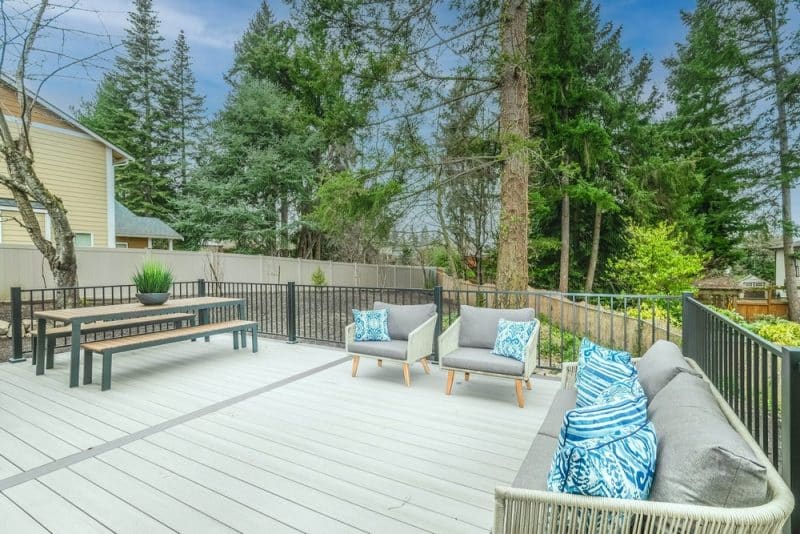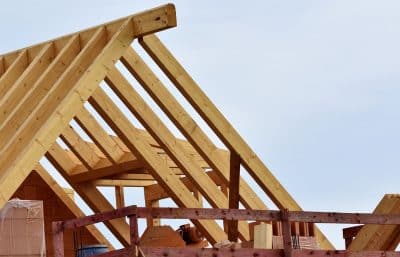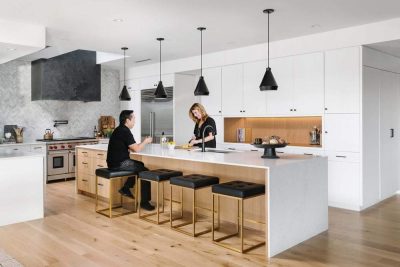
A quick online search about deck failures will reveal many articles and videos showcasing deck collapses. Some are humorous, others serious, all resulting from construction mistakes.
Contrary to many home improvement TV shows, building a deck is a significant task. It requires careful attention to design, safety, and avoiding potential pitfalls. This article discusses common deck building errors and offers guidance on avoiding them.
Lack of Focus on the Deck Frame
Positioning the frame incorrectly during deck construction is a common mistake. It can lead to uneven flooring and warped boards. Accurate framing is the foundation of a secure, durable deck. Precise measurements and sturdy materials are essential for longevity and stability.
Errors in deck post footings, incorrect joist measurements, or substandard hardware can jeopardize the deck frame’s integrity. These mistakes can lead to a collapse over time. While many use treated lumber for deck posts, advanced alternatives offer improved performance.
Ensuring the correct alignment and positioning of the deck frame is crucial. A strong frame supports the entire structure, distributing weight evenly and preventing future issues. It’s essential to invest time in double-checking measurements and using high-quality materials to build a reliable deck frame.
Mismatched Decking
Another common error is failing to align the composite decking boards with the house’s aesthetics. For instance, black deck boards against white siding can create a discordant look. Deck boards should harmonize with the home’s elements, including siding, window frames, deck roofing, railing, and fences. This creates a tranquil backyard atmosphere.
Many overlook the costly mistake of using composite deck boards that cannot be painted and are expensive. Avoid this material for your project. Choose the best wood for decks, which allows for color customization and recoating as needed.
Matching the decking to the house’s style enhances the overall appearance and feel of the space. Thoughtful selection of materials and colors can significantly improve the deck’s appeal, making it a seamless extension of your home. Consider consulting with a design expert to ensure cohesive aesthetics.
Attaching the Ledger Board Incorrectly
The ledger board is crucial in linking attached decks to a building. Usually made from pressure-treated wood, it enhances the deck’s stability. It establishes the framework’s rigidity and supports the joists.
Secure the ledger to the main structure’s studs rather than attaching it to surface materials like brick or stucco. Properly installing the ledger is the most challenging aspect of deck construction. It requires specialized hardware due to moisture accumulation, which can lead to decay and compromise the deck’s structural soundness.
A correctly installed ledger board ensures the deck’s safety and longevity. Improper installation can lead to severe structural issues and potential deck failure. Ensure that you use the appropriate fasteners and follow manufacturer guidelines to maintain the deck’s integrity over time.
Incorrect Rail Height
Decks exceeding a specific height requirement need rails. However, contractors often advise placing rails on all decks. They serve as a protective barrier against falls and visually define the space, creating an outdoor room ambiance.
A common error is placing handrails at an incorrect height. Most building codes stipulate a minimum height to prevent falls. However, some homeowners disregard these regulations and opt for lower railings. This oversight can result in accidents for both adults and children.
Rails are not just safety features; they also contribute to the deck’s design. Choosing the right height and style for your rails can enhance the deck’s functionality and aesthetics. Regularly inspect and maintain the rails to ensure they remain secure and compliant with safety standards.
Misjudging the Duration Needed
Rushing the process is not advisable when repairing or enhancing your deck. Properly rejuvenating an aging deck demands time and attention. Carefully examine the deck, diagnose any issues, gather all necessary materials, and diligently carry out the repairs. Allocating enough time in your schedule allows you to complete the task effectively, address errors, and handle unexpected challenges.
Planning and patience are key to successful deck projects. By taking the time to do it right, you ensure that your deck will be safe, durable, and visually appealing. Break down the project into manageable steps and set realistic deadlines to avoid feeling overwhelmed.
Conclusion
Consider these factors to craft a visually captivating and user-friendly deck. Thorough research and meticulous planning can help you avoid typical deck construction errors, ensuring prolonged deck enjoyment.
A well-constructed deck can transform your outdoor space, providing a place for relaxation and entertainment. By following best practices and avoiding common mistakes, you can build a deck that enhances your home and withstands the test of time. Invest in quality materials and professional advice to make your deck project a success. Remember, understanding the key mistakes to avoid when building a deck is essential for creating a safe, durable, and beautiful deck that will serve you well for years to come.








